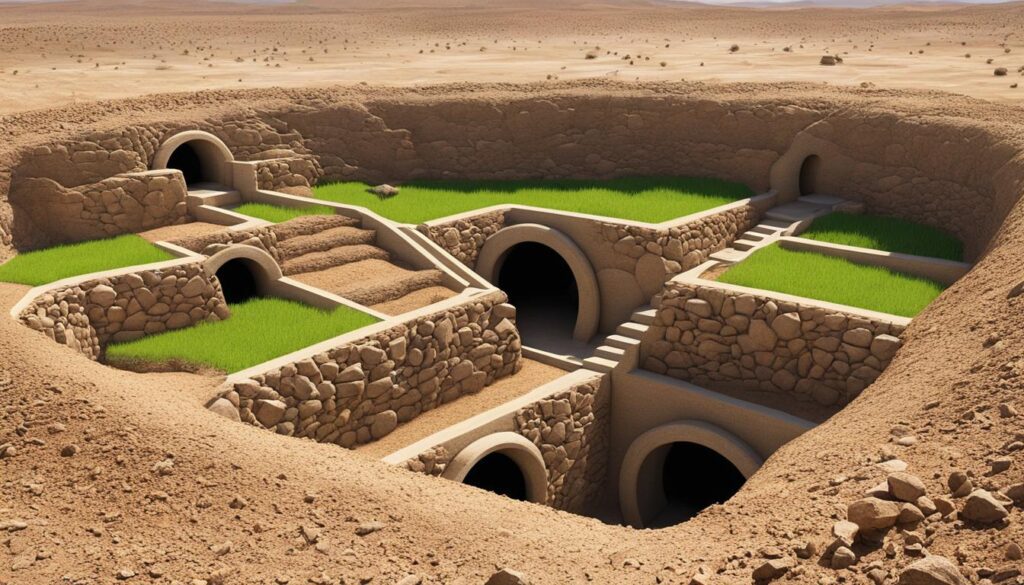Prairie dogs are a controversial species that are both celebrated and vilified. They have experienced a significant decline in population due to various human-caused factors and are often viewed as pests by landowners. Common methods used to remove prairie dog colonies include shooting, poisoning, contest kills, and bulldozing. However, these methods can have negative impacts on the ecosystem and other wildlife species associated with prairie dog colonies. Conflict reduction plans and coexistence offer more wildlife-friendly and humane solutions to manage prairie dog populations.
When dealing with prairie dog issues, it is important to consider more humane and environmentally friendly methods of control. Trapping and relocation, as well as the implementation of barrier systems, can help manage prairie dog populations without causing harm to other wildlife species or the ecosystem. It is crucial to collaborate with local authorities, experts, and conservation organizations to create effective prairie dog management plans. By promoting coexistence and understanding the ecological benefits of prairie dogs, it is possible to find sustainable solutions that benefit both wildlife and people.
Understanding the Ecological Benefits of Prairie Dogs
Recent studies have shed light on the often overlooked ecological benefits of prairie dogs. These small creatures play a pivotal role in the grassland ecosystem, contributing to the overall biodiversity and supporting a wide range of wildlife species.
One of the significant ecological benefits of prairie dogs is their impact on nesting habitats for birds. Prairie dog colonies create patches of dirt that serve as ideal nesting sites for birds like the mountain plover. These nesting habitats are essential for the survival and reproductive success of various bird species.
Furthermore, the digging activities of prairie dogs have a positive influence on the growth of diverse plant species. By aerating the soil and turning it over, prairie dogs create favorable conditions for seeds to germinate. This promotes the establishment of a rich variety of plants, enhancing the overall biodiversity of the grasslands.
The presence of prairie dogs in an area also benefits grazing animals, including domestic cattle. Grazing animals such as cattle prefer to graze within prairie dog towns due to the higher nutritional value of the vegetation found in these areas. This preference indicates that prairie dog colonies contribute to enhanced forage availability, supporting the needs of both wildlife and livestock.
Additionally, prairie dog colonies serve as havens for various wildlife species. Birds of prey such as hawks and eagles are often observed hunting near prairie dog towns, taking advantage of the abundant prey opportunities. Other wildlife species, including songbirds, foxes, and even nematodes, depend on the resources provided by prairie dog colonies for their survival.
The ecological benefits of prairie dogs extend beyond their immediate habitats. Through their presence and activities, these small mammals contribute to the overall health and resilience of grassland ecosystems. Understanding and preserving the ecological role of prairie dogs is crucial for maintaining the delicate balance of biodiversity in our natural landscapes.
Biology and Behavior of Prairie Dogs
Prairie dogs, fascinating creatures that they are, are large burrowing rodents that live in colonies known as prairie dog towns. These towns are home to coteries, small groups of individuals that have a complex social structure and defend their territory within the larger community.
One of the remarkable aspects of prairie dogs’ behavior is their extensive burrow systems. The prairie dog burrows can have multiple entrances, interconnected tunnels, and can reach impressive depths of up to 14 feet. These intricate underground structures provide not only shelter and protection for the prairie dogs but also serve as homes for a variety of other animals including burrowing owls, cottontail rabbits, and even rattlesnakes.
Prairie dogs are diurnal animals, meaning they are active during the day. They exhibit fascinating social behaviors within their coteries, communicating through a series of distinct calls to alert their group members of potential dangers or to respond to specific stimuli. These vocalizations are highly intricate and allow for effective communication within the prairie dog community.
When it comes to reproduction, prairie dogs are quite prolific. Female prairie dogs give birth to litters of three to eight young per year. This rapid reproduction contributes to the growth and expansion of the prairie dog population. Dispersal of juveniles typically occurs in late spring, with most prairie dogs traveling within a range of two to six miles, contributing to the connectivity and genetic diversity of prairie dog towns.
The Role of Prairie Dog Burrows
The extensive burrow systems created by prairie dogs also play a vital role in the ecosystem. These burrows provide shelter for a variety of species, offering refuge to animals during extreme weather conditions or protection from predators. Burrowing owls, for example, frequently coexist with prairie dogs, nesting and rearing their young in the burrows.
The interconnected nature of the burrow systems also contributes to the overall soil health. The digging activities of prairie dogs help aerate the soil, improving water percolation, nutrient cycling, and vegetation growth. The complex maze of tunnels creates microhabitats that support various organisms, promoting biodiversity within prairie dog colonies.
Prairie Dog Social Structure
The social structure of prairie dogs is fascinating. As mentioned earlier, prairie dog colonies consist of coteries, which are small territorial groups of individuals. Each coterie usually consists of a dominant male, several females, and their offspring. These coteries defend their territory within the larger prairie dog town, engaging in both vocal and physical displays to establish dominance and protect their group from intruders.
This complex social structure plays a crucial role in regulating population density and promoting cooperation within the prairie dog community. It allows for effective communication, resource sharing, and the division of labor, ensuring the survival and success of the group as a whole.
The Reproductive Success of Prairie Dogs
Prairie dogs are well-known for their remarkable reproductive capacity. With females giving birth to litters of three to eight young per year, the population can grow rapidly. This reproductive success ensures the survival of the species and their ability to adapt to changing environmental conditions.
However, this rapid reproduction also presents challenges, as it can lead to overcrowding within prairie dog towns and competition for limited resources. Dispersal of juveniles in late spring helps alleviate these challenges by reducing population density within a particular area and facilitating gene flow between different prairie dog communities.
Understanding the biology and behavior of prairie dogs, including their intricate burrow systems, social structure, and reproductive patterns, provides valuable insights into their ecological role and highlights the importance of their conservation.
Conclusion
When dealing with prairie dog issues, it is important to consider more humane and environmentally friendly methods of control. Trapping and relocation, as well as the implementation of barrier systems, can help manage prairie dog populations without causing harm to other wildlife species or the ecosystem.
Collaborating with local authorities, experts, and conservation organizations is crucial in creating effective prairie dog management plans. By promoting coexistence and understanding the ecological benefits of prairie dogs, it is possible to find sustainable solutions that benefit both wildlife and people.
It is essential to prioritize the preservation of biodiversity and the delicate balance of our ecosystems. By adopting responsible management practices, we can ensure the long-term survival of prairie dogs while minimizing conflicts and protecting the well-being of other species that rely on their presence.
Can Prairie Dogs Cause Damage to Transformer Boxes in Yards?
Prairie dogs, known for their burrowing nature, can inadvertently cause damage to transformer boxes in yards. Their extensive tunnels can undermine the stability of these boxes, leading to potential electrical hazards. To prevent this, homeowners should consider employing strategies on how to hide transformer boxes, such as building protective enclosures or landscaping around them while ensuring easy access for maintenance purposes.










